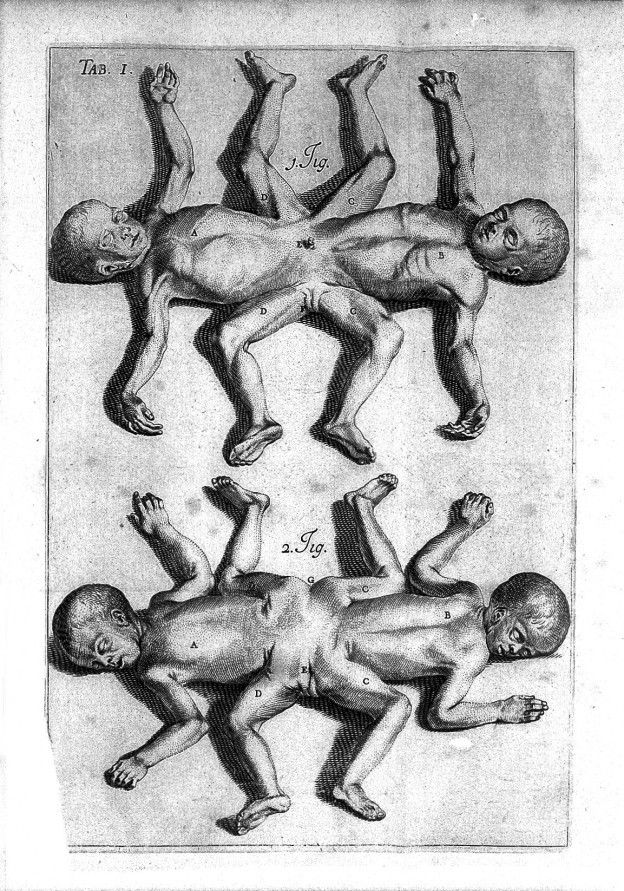This is an in-depth post on conjoined twins from yesterday and today. We will discuss the life and challenges of some of the most well-known cases (from nearly the last 1,000 years of history). We will also explore some of the different types of conjoined twins. There will also be fascinating information on some of the successful and unsuccessful surgeries performed in the last 50 years.
Siamese twins is the dated term for conjoined twins (today, it is often used as a synonym). It was named after the most famous pair of sideshow conjoined twins named Chang and Eng Bunker (1811-1874) born in Siam (the former name of Thailand). We briefly discussed the story of these famous twins in a previous post. The first known use of the term “Siamese twins” was in 1829.
The rare phenomenon of conjoined twins occurs in a range from 1 in 49,000 births to 1 in 189,000 births. The occurrence is a little higher in Southwest Asia, Brazil and Africa. Unfortunately, around half of babies are stillborn. However, just a smaller fraction of the twins that are born alive will have abnormalities incompatible with life. Interestingly, the condition occurs more often in females (ratio of 3:1) . We will now begin our post with the early years of twins joined in the womb.
For related content, visit our fascinating article called Conjoined Triplets.
For information on conjoined animals, visit our post 5 Extreme Animal Oddities.
Twins Joined In The Whom: The Past
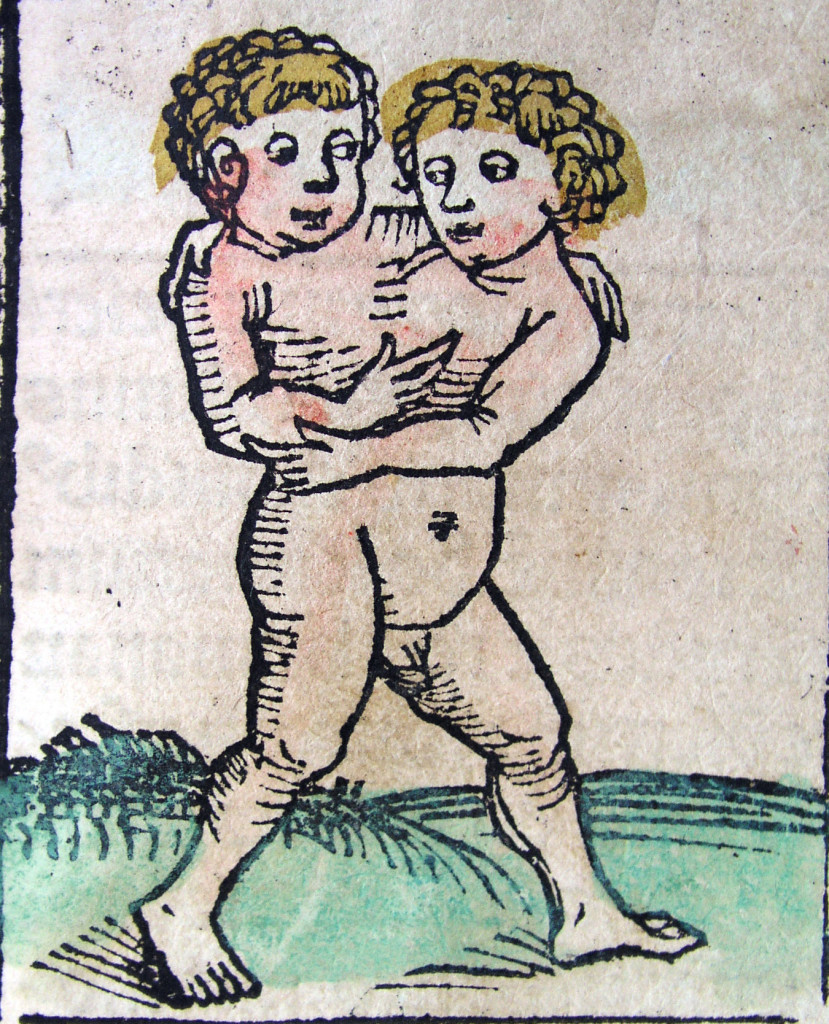
Nuremberg Chronicles – Male Siamese Twins by Hartmann Schedel (1440-1514) Siamese twins from the past
Early Separation Surgery
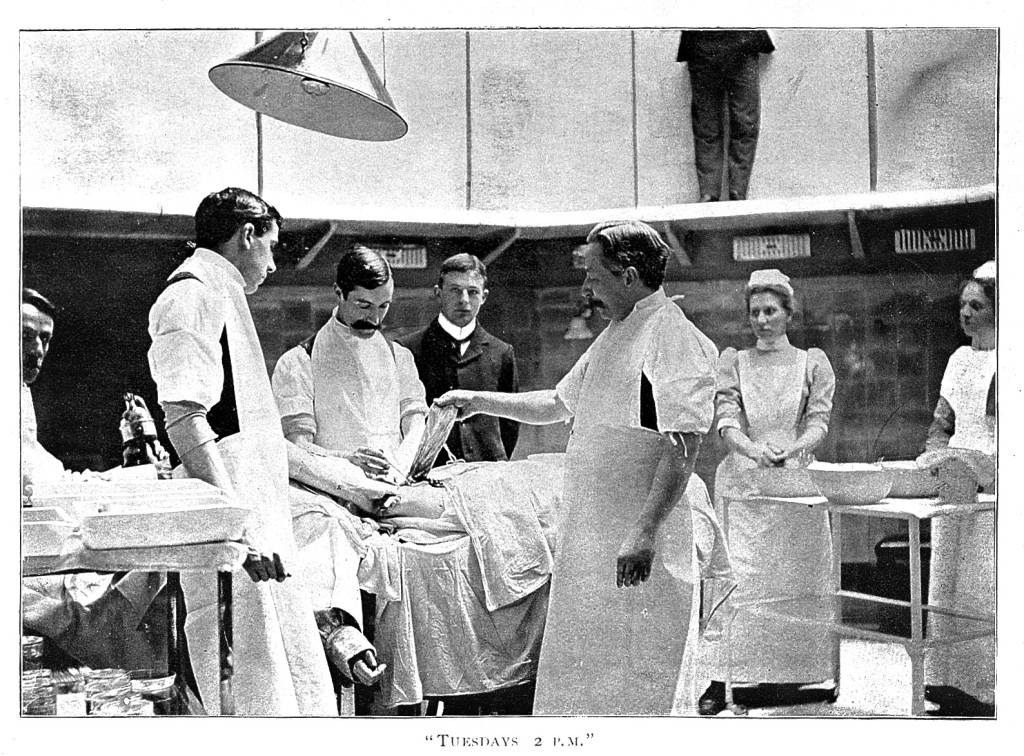
“A surgical operation being performed, circa 1900.” by Wellcome is licensed under CC BY 4.0
Separation surgery for conjoined twins may range from very simple to very challenging. It depends on the point of attachment, as well as the internal parts that are shared. Unfortunately, surgery will often result in the death of one or even both twins. The surgery gets even more risky when the twins are joined at the head, or if they share a vital organ. Surprisingly, in many cases, twins will prefer to just remain conjoined. According to Alice Dreger of Northwestern University, the quality of life of twins who choose to remain conjoined is said to be a lot higher than commonly believed.
Siamese twins Chang and Eng were joined by a band of flesh, cartilage, and their fused livers at the torso. With the available technology in modern times, they could have been easily separated.
The World’s Fist Successful Separation (conjoined twins that share a vital organ)
Back in 1957, a very determined surgical team had made international medical history. They had performed the world’s very first successful separation surgery of conjoined twins that share a vital organ. Omphalopagus twins (conjoined twins that are united at their umbilical regions) named John Nelson and James Edward Freeman (Johnny and Jimmy) had shared a liver, but had separate hearts.
Born 1100
Mary and Eliza Chulkhurst: The Earliest Set Of Conjoined Twins
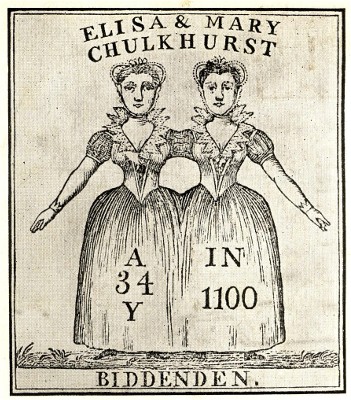
The 1600s
Lazarus and Joannes Baptista Colloredo
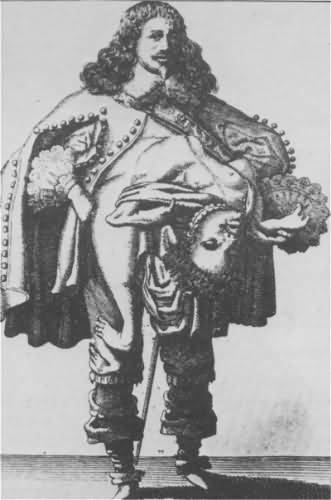
In order for mobile brother Lazarus to make a living, he would tour several countries in Europe and would also visit the court of Charles I of England. According to contemporary accounts, Lazarus was described as a very courteous and good-looking man. When Lazarus wasn’t exhibiting himself and wanted to avoid all unnecessary attention, he would just cover his brother with his cloak.
According to later accounts, Lazarus had went on to get married and even had several children. Fortunately, none had his condition. There are no records to indicate when the twins had died.
The 1700s
Helen and Judith of Szony

The 1800s
Liou Tang Sen and Liou Seng Sen
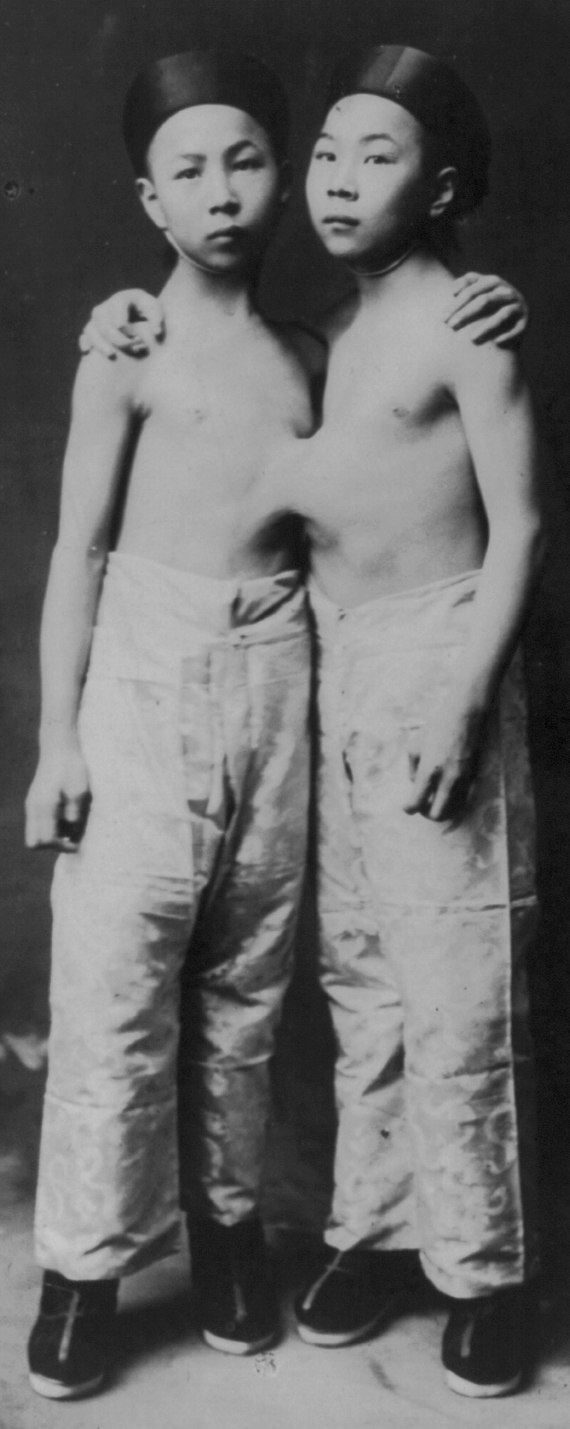
Although some websites state that the brothers are the oldest conjoined twins that have ever been recorded, we were unable to verify this claim. According to Wikipedia, the record is 63-years-old.
The Early 1900s
Daisy and Violet Hilton

“Daisy and Violet Hilton, conjoined twins, dancing.” by Wellcome is licensed under CC BY 4.0
Daisy and Violet Hilton (5 February 1908 – 4 January 1969) were English conjoined twins. They were joined by their hips and buttocks. Although they didn’t share any major organs, they did share blood circulation. Kate Skinner’s (their mother) employer named Mary Hilton had helped out in childbirth. Due to potential commercial prospects she had seen in the twins, Hilton purchased them from their mother. She went on to take them under her care. This unexpected change didn’t end up being the most pleasant experience for the twin sisters. Hilton was said to be very strict and even physically abusive. The twins were forced to call her “Auntie Lou”, and her husband “Sir”.
The Hilton twins were certainly a very busy pair. At the young age of just 3-years-old, Mary Hilton took them on a tour though Germany, Australia and then the United States. In the 1920s and 1930s, they toured the United States sideshow, vaudeville and American burlesque circuits. Although the twins did all of the work, only their controllers kept the money they had earned.
Not only was the sister’s condition rare and a significant influence in their success, they could also sing and dance. In 1926, Bob Hope (comedian, vaudevillian, actor, singer, dancer) had formed an act called the Dancemedians with the sisters. The act involved the twins performing a tap-dancing routine. After the death of Mary Hilton, the twins were handed off to her daughter and husband who were also said to be physically abusive. By 1931, the twins were no longer held captive.
The popular twin sisters eventually ended up suing their managers. Luckily, this had helped them gain freedom from their contract. They received $100,000 in damages. The later participated in more performances and even appeared in the 1932 film called Freaks. Their popularity eventually weakened after the 1930s. They made their last public appearance in 1961 at a drive-in cinema located in Charlotte, North Carolina. After being abandoned by their tour manager, they were left with no money or transportation. This left them with no choice but to take a grocery store job.
The twins were found dead on January 4, 1969. They supposedly died from the Hong Kong Flu. Forensic investigation reported that Daisy was the first to die. Violet had died between two and four days later.
Conjoined Twins Of Today
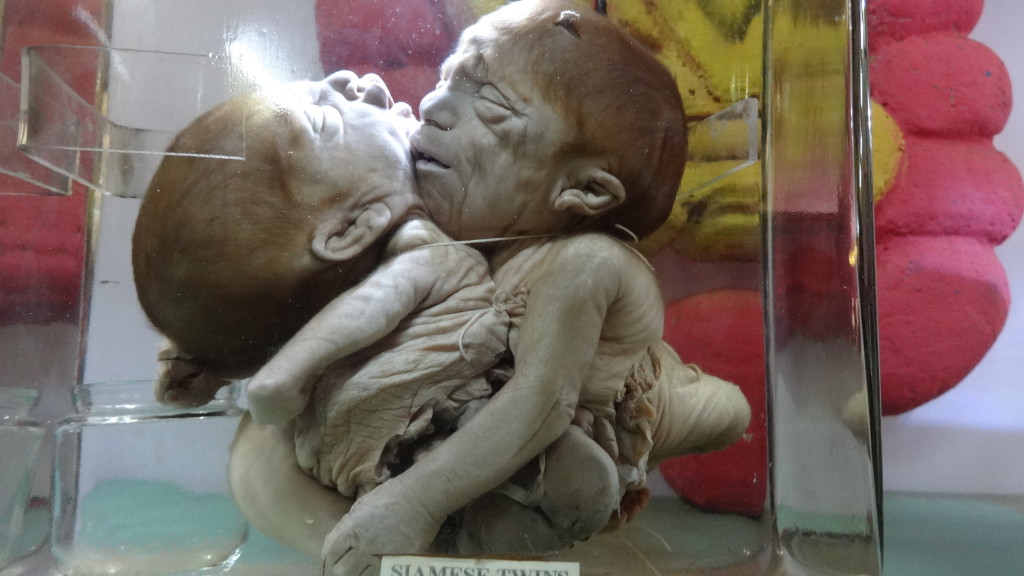
“Siamese twins-Fetus” by Arjuncm3 is licensed under CC BY-SA 3.0
Modern Separation Surgeries
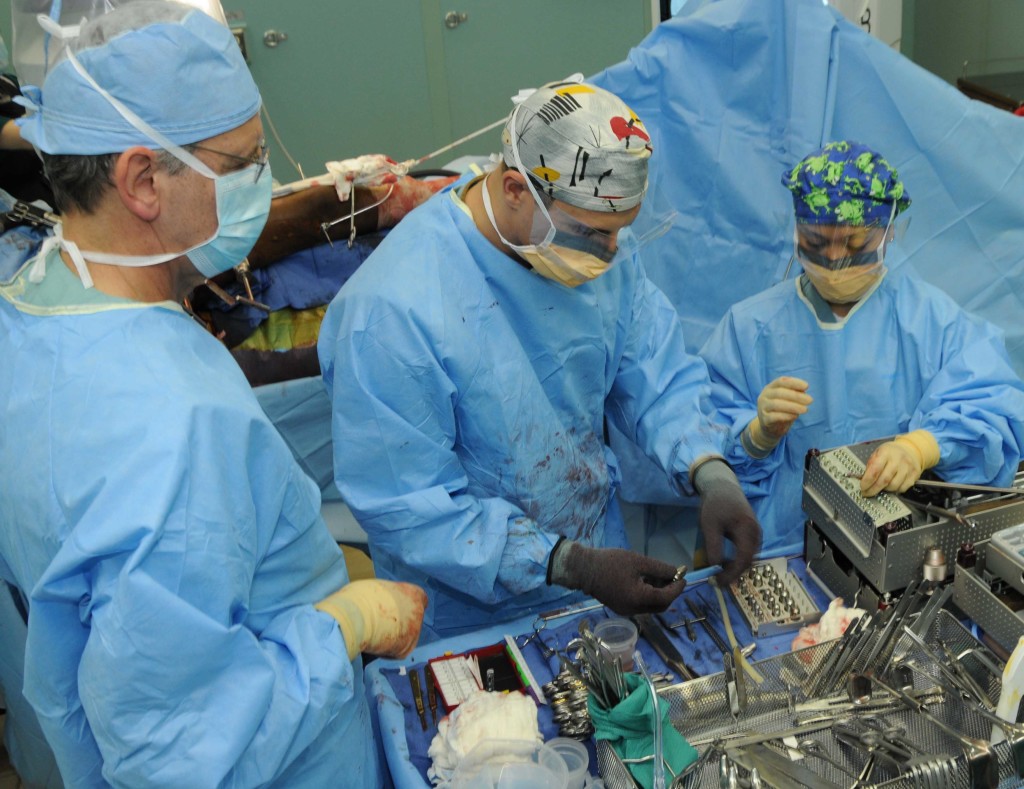
Due to this successful procedure, the Binder twins are now able to live their lives independently. Before this particular surgery had occurred, separating these types of conjoined twins was never a success. Unfortunately, each attempt would result in the either the death of one or both twins.
Surgical Separation Surgery That Lead To Death
Despite advancements in surgical technology, unfortunately, not every case is successful. In 2001, two 36-year-old women from Iran, Ladan and Laleh Bijani were surgically separated in Singapore. The sisters were joined at the head but had separate brains (craniopagus). Unfortunately, there was a undetected major vein that was hidden from the scans and discovered during the operation. Although the separation had been completed, both women died while they were still in surgery.
Brothers Joined At The Hip: Living In Harmony
Shivanath Sahu and Shivram were born joined at the waist. Not only do they share two legs and two arms, but they are also believed to share the same stomach. Due to the fact that they have independent brains, lungs and heart, their chances of a successful separation is high. Although doctors believe the brothers can be successfully separated, they have chosen to stayed joined.
These twin brothers seem to get along well. They are a team that has made great efforts to live a normal life as much as possible. They will even assist each other with combing hair, showering and dressing. Amazingly, they even taught themselves how to ride a bicycle to their school. However, the brothers still often face difficult challenges. For example, when it rains, they are faced with difficulties walking. Interestingly, even though one twin may want to sit down while the other wants to lie down, they still manage to stay in harmony. They respect each other and compromise.
Craniopagus Twins: Sharing The Same Brain

Craniopagus twin sisters Krista and Tatiana Hogan (born October 25, 2006) are joined at the top, backs, and sides of their heads. They share a bridge that connects one twin’s thalamus (gray matter that relays sensory information and acts as a center for pain perception) to the other twin. Information from one twin can go directly (by the nervous system) to the other twin. This physical connection allows them to do something that may seem absolutely impossible. For example, their mother will cover the eyes of one twin and show a stuffed animal to the other twin (with eyes open). Regardless of one having their eyes closed, she is still able to state what the stuffed animal is. This is because the twin with her eyes open, will relay the information directly to the other twin.
When the mother of Krista and Tatiana found out that she was pregnant with Craniopagus twins, she was in disbelief. Although doctors told her that terminating the pregnancy was an option, she immediately refused. As far as a separation surgery, doctors claim it is feasible, but very risky. One twin may become paralyzed. However, there are concerns about Tatiana’s heart and high blood pressure. Tatiana has the responsibility to supply blood to not only her own brain, but also Krista’s.
Although the sisters have a rather unusual brain connection, they are still developing two distinct personalities. They face extreme difficulties every single day. However, they still manage to get along. Despite the fact that they were given a 20% chance of survival at birth, they have beaten the odds. As they grow older, doctors and scientists will continue to keep a good eye on their health.
Abigail & Brittany Hensel: The Only Known Surviving Dicephalic Parapagus Twins
Abigail & Brittany Hensel (born March 7, 1990) are a pair of dicephalic parapagus twins. They are said to be the only known surviving dicephalic parapagus twins. According to Wikipedia, only four known sets of conjoined twins who shared an undivided torso and two legs have ever survived into adulthood. Although Abigail and Brittany have a separate head, their bodies are joined. However, they both have their own heart, stomach, spine and spinal cord. Each twin has the responsibility of controlling half of their body. Each twin will operate one of the arms and one of the legs. This requires a lot of cooperation from both. Although each twin is capable of writing and even eating separately, various activities such as swimming and running is a lot more challenging.
In order for these types of activities to be possible, the sisters must be coordinated and alternate symmetrically. When operating a car, each twin must perform a sequence of separate actions that coordinate with each other. Fortunately, both twins passed their driver’s license exam (including the written test). Abigail controls the devices located to the right of the driver’s seat, while Brittany controls the devices on the left. They both control the steering wheel together. In order for both to be eligible for a driver’s license, they were required to take the test twice (one for each twin).
After doctors had told the twins parents about a possible surgical separation attempt, they refused the option. If they were to attempt a separation surgery, it would more than likely result in the death of at least one twin. Luckily, their parents made the choice to reject the risky surgery. The sisters had learned to develop their skills (such as walking) regardless of their limitations. This progress made the parents confirm that they would not attempt a surgical separation. They stated that the quality of life as conjoined beings would be higher than for the surviving twin (or twins) living separately. Fortunately, they do not have any known heart defects or any organ anomalies.
Surprisingly, although the twin sisters are the only known surviving dicephalic parapagus twins, they didn’t get a lot of press attention until they had reached adulthood. By the age of only 16, they participated in interviews (such as The Learning Channel) to discuss how they live their daily lives, as well as their future plans. They eventually starred in their own reality series on TLC called Abby & Brittany. Although they are currently very well-known, they do not like to be starred at or photographed by strangers because they are trying to live a more private life. The twin sisters have previously spoke about their interest in dating, getting married and eventually having children.
The Oldest Conjoined Twins Ever: Ronnie And Donnie Galyon
Ronnie and Donnie Galyon (born October 28, 1951) are conjoined twins who hold the current world record for the longest-lived conjoined twins in all of history (as of 5 July 2014). The American twins beat a previous record that was once held by Italian brothers Giacomo and Giovanni Battista Tocci.
The Galyons are joined from the sternum to the groin. They share a set of organs, which prevents them from being separated. At the age of 9, their father put them in a sideshow attraction. They were exhibited in sideshows in the United States and Latin America. This not only helped provide a lot of income to their family. It also helped them become very famous. They put in 30 years of sideshow work that eventually helped them purchase a house. They are currently retired from the sideshow business, but still make appearances in a variety of television shows such as The Jerry Springer Show, TLC, Channel 5 (a UK television network) and a Discovery Channel documentary.
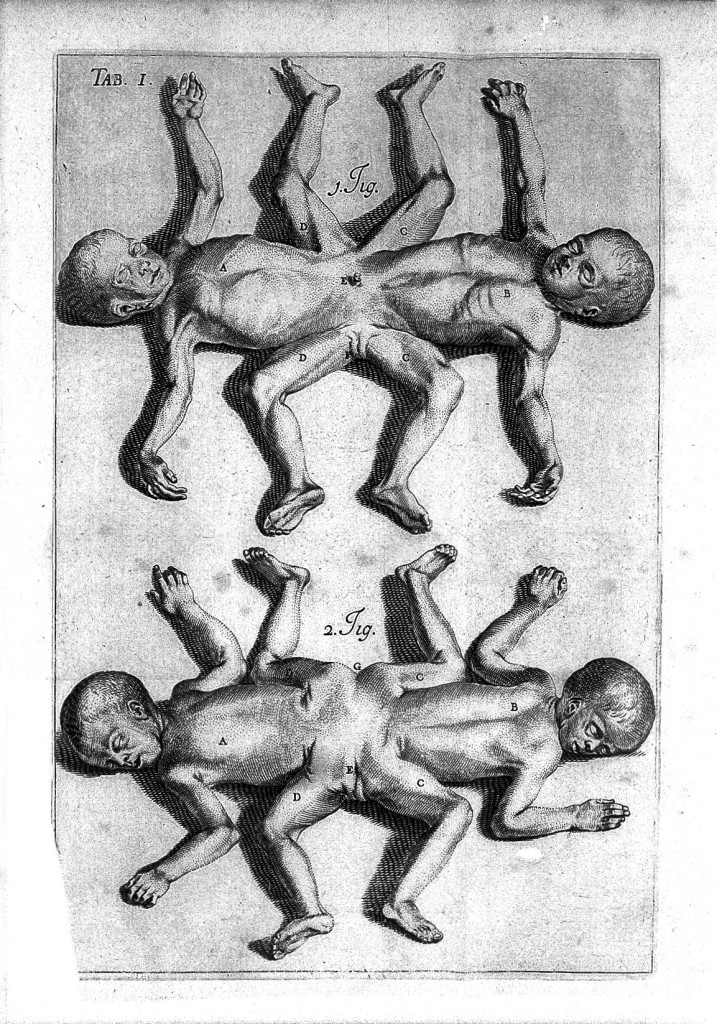
“J. Palfyn, Descriptione anatomique des parties de la femme” by Wellcome is licensed under CC BY 4.0
The Conclusion
Some of these conjoined twin cases may have surprised you. Isn’t it fascinating that regardless of the odds against them, some will survive for several years (or even longer much longer)? Perhaps, their desire to live the best quality life is what plays a vital role in determining a longer lifespan.
Of course, many people will like to think of conjoined twins as noting but humans with a freaky condition. However, they are much more than just a freak of nature. They are strong-willed people living a life of constant struggle. Instead of giving up on their battle for survival, they keep moving forward. If you saw the videos we provided, you probably noticed that some look very happy.

